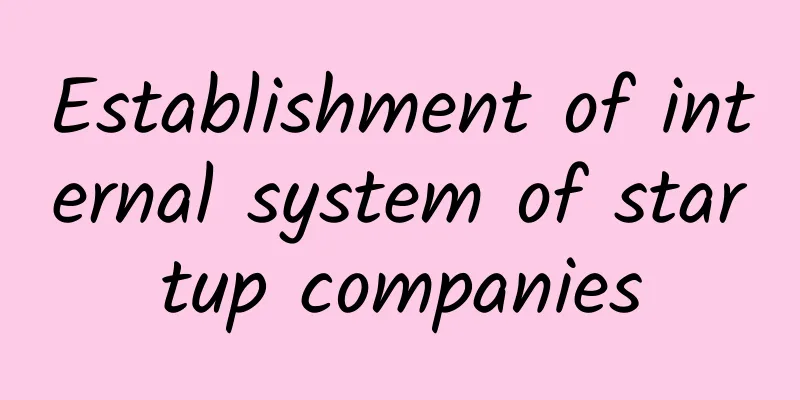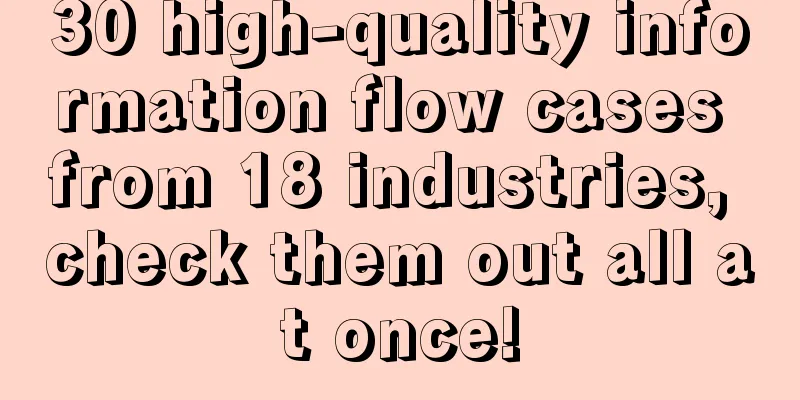Establishment of internal system of startup companies

|
Recently, I have been thinking about how to lead a team and where the CEO should spend his time. I used to think that the CEO should design the product well and sometimes just be a firefighter to fill in the gaps. Now I think this understanding is too simple and I have some new insights that I would like to discuss with you. What is a startup? I often compare a startup to a DIY sports car running on the highway, with all its parts exposed and ready to fall apart at any time. As the car runs, countless parts will fall off, and it may fall apart at any time, and parts may break down or break down at any time. As a driver, the CEO not only needs to keep the steering wheel tight (the company's strategic direction and track issues), but also needs to tighten the screws on the parts and apply the patches (each function does not fall behind) during the high-speed running process; modify the appearance, paste and paint the iron sheets (both internal and external skills must be practiced well, and the company's form is complete); replace the parts that are not working (each function and personnel are the best and meet the needs of the organization); keep refueling (have more cash) and increase the power (have the ability to continuously upgrade the battlefield while doing a good job in the existing business). *** hopes that this DIY sports car will eventually turn into a Porsche on the highway. The startup triangle cycle There are three most important things for startups in this "transformation" process: people, things, and money. These three points form a triangular cycle system. At the beginning, there are people, and everyone wants to do something. Then, if the people and things are reliable, there will be initial funds (maybe self-funded or raised). When things gradually show results, there will be more funds, and then more and more powerful people can be recruited. Then these more powerful people will do things more and more awesomely, and then either the things will make money themselves or larger investors will be interested. In short, it is a cycle process in which things get better and better, more funds are raised, and the scale of the staff is getting larger and larger. This cycle is a positive feedback loop, which means that each link will get the same feedback and results from other links. Not only positive, but also negative is very likely. If one thing is not done well, more cash will be consumed, and then due to the gradual shortage of cash, it may not be able to afford good people, and employees will leave, and then things will get worse and worse, and then... the company will die.
The CEO of a startup company actually works every day to ensure that the triangle cycle of people, things, and money is always positive. When a negative or stagnant cycle is discovered, it is time to sound the alarm and ask yourself if something is wrong. The rhythm of things Before we talk about the “cold start” issue, let’s first discuss how the company does things. In other words, how to think about which things are the most efficient and meaningful? What should be the rhythm of the company’s promotion of these things? What is relaxation and what is relaxation? When should we relax and when should we relax? Which resource in the industrial chain is the most difficult to obtain and can establish the strongest barrier? Is this link an important industry bottleneck? What strategy should we use to obtain these resources? How to cold start the triangle cycle Then everyone will ask, this is actually a chicken-and-egg problem, which one is more important, personnel, money? How to solve this problem from a certain angle? I have thought about this question for a long time: I used to think that the most important thing is the matter, the general direction and what to do. Now I find that it is actually necessary to solve the problem of people first. People are the most important. The thing is actually an idea, which is divided into two levels: strategy and tactics. Strategy is the big picture “where are we going?” question; Tactics are the microscopic "how do we move?" questions. Strategy is often considered by CEOs and middle and senior management, while tactics are considered by the specific execution level. But no matter which one, the key is in people's minds. Money actually comes from people: the initial founding capital may be paid by a few people themselves, or angel investors may provide financial support after taking a fancy to the team. So among the three things of personnel, affairs and money, “people” is the most important and is the foundation of the other two. How do startup teams find people? How can they help talents grow better? All problems in a company’s development can actually be attributed to the fact that the team is not growing well enough. How to solve this problem? I think there are three main points: ① The CEO should have a clear mission and vision and remain passionate at all times ② Actively cultivate middle-level managers ③ Create a good company ecosystem to enable employees and teams to grow Concept, confidence, mission, vision, passion All product and user data and the accompanying cash flow changes can only be regarded as the result of management. The company's greatest asset is the team itself, the people, and at the top of this "people" crown is the CEO. CEOs, especially those of startups, are prone to getting caught up in the details of specific matters, and the think tanks (sometimes investors) accompanying the CEO are also prone to overly rationally analyzing the rights and wrongs of the business. Over time, a company is like a machine, not an organism, and cannot grow on its own. A perseverant CEO can keep his energy shining and giving heat to others for a long time; if his ability is a little weaker, the company will gradually lack endogenous motivation. The CEO of a company can certainly raise his head and see the road. But if he does not realize this, investors should sound the alarm. My point of view is to return the dream and passion to the CEO. When he lowers his head too much to see the road, help him raise his sight and look into the distance; at the same time, remind him to look back at his team and the starting point where he started. Looking far ahead is to identify the direction and ensure that you do not go astray; Observing the team helps him care about the other states and emotions of team members besides work, and discover problems that have not yet occurred; The purpose of watching the starting point is to remind him not to forget his original intention and to maintain his faith and enthusiasm. In fact, what drives a company, especially a great company, is not only the right market, the right people, the right approach, the right competitive strategy and other logically correct things. What can truly drive a company and its team members are always the ideas, confidence, mission, vision and the passion brought by these. An example that I can cite is the cultural field that I have been looking at recently. You will find that the cultural field is very interesting. Take the agency as an example. The final product of the agency is the artist + the content produced by the artist. These two things are the external interfaces of the agency. Fans can clearly feel whether there is "love" between the content and the artist through content consumption. In brokerage companies, there is often a distinction between the operation team and the artist team. The artist's attitude towards various matters is based on what the operation team values or does not value. The executive team in the operation team implements these to the artist; the executive layer of the operation team is directed by the management, and the management is influenced by the CEO. The result that *** sees is that if the CEO has "love" for this matter, the management will have "love"; if the management has "love", the executive layer will have "love"; if the executive layer has "love", the artist will have "love", and the content produced by the artist will have "love". Only then will the fans feel "love". To put it another way, if the CEO only cares about money and economic benefits, the management and executive levels will value economic benefits under the influence of the CEO; similarly, artists will feel this tendency in their daily lives and activities and reflect it in their behavior; then this feeling will be accepted by fans through the content produced by the artists. It can also be seen from here how important it is for the CEO to maintain his own beliefs and enthusiasm for something, because the only person who can influence the team is the CEO himself. It can be said that the team is what the CEO is: if the CEO is a wolf, the team is a wolf; if the CEO is a sheep, the team is a sheep; if the CEO is a cow, the team is a cow. Middle level cultivation When the CEO wants to understand his spiritual side, it is definitely not enough for one person to lead everyone to work. In the early days of the company, the founders (they) started a company with a vision and a thing, based on mutual affirmation and trust, and each person was in charge of some affairs. When it comes to the period of rapid development, the root cause of the bottleneck of most companies is always concentrated on talent. This problem is most easily felt from the efficiency of the execution of specific affairs, but the definition of talent training should not be limited to solving specific execution, but should be extended to the transmission of spirit and corporate culture. In an organization, as long as the general direction and original intention are not deviated from at the beginning, you can always find some capable and like-minded colleagues in the organization. I think these people are the solid middle-level foundation of a company. The CEO himself should frequently communicate with them on ideas, align them at all times, and form mutual recognition on the company's vision and strategic direction. Since these colleagues often come from front-line work, they should not communicate too much about specific execution issues. I believe that their excellence comes from the training of specific affairs. Unity of thought is the most important. People with great abilities have great effects and great destructiveness. If the premise assumptions and long-term goals are inconsistent, even if they can be bound together by interests in the short term, there will eventually be a tilt, causing the organization to collapse. After the spiritual level is unified, we should gradually release some power, entrust some important strategic tasks and functions to them, and collect feedback and provide guidance from time to time. Provide support at key nodes, do credit endorsement, and help these subordinates establish prestige in the organization. Then, as these people gradually get better, the organization becomes more complete, the thinking is more unified, and special affairs and functions are in charge, the CEO's energy can be put into other places with greater output. The most important job of the CEO is to run ahead of all members in thinking and pattern, so that he can be a competent leader. An example of this is a company I am currently working for in post-investment. There is an interesting phenomenon in their company. The company's products and cash are very good, but the CEO told me some time ago that everyone in the team was depressed and lifeless. I stayed in their company for a while and had a meal with the CEO. In the end, I found out that it was because the CEO himself was extremely anxious. Although the company was in good shape, the CEO still lacked confidence because this was his first time starting a business and he was always afraid that something would go wrong. My main job now is to help him relieve stress on the one hand, tell the CEO: You are very good, we have great confidence in you, you have done a good job, tell him not to be afraid, we as investors will always support you; on the other hand, you should consciously cultivate people who can share your work, so that you don't have to be in the company all the time, and the team can still work efficiently when you are not in the company. The middle management grew up and helped the CEO share the pressure, so naturally the CEO's anxiety was eliminated. Negative emotions were no longer transmitted to the team, and everyone was naturally happier at work. At the same time, with the transmission of the vision, everyone began to discover new self-values and self-identification, and the overall morale of the team was boosted. When I went to the company again a month later, I found that everyone's efficiency and atmosphere had greatly improved. Establishment of the company's internal ecosystem When the spirit of the middle-level managers is aligned with that of the CEO, the CEO should urge the middle-level managers to convey the company's philosophy and vision again. After expressing and conveying the spirit to the top-level employees, the CEO should start the third part of the work: building an employee growth system. The principles of building an ecosystem are the same in terms of product design, community building, and company organization. The employee growth system is actually the most important part of the company's ecosystem, which is the human level. Of course, there are also business levels and money levels in the company's ecosystem. Let's talk about the human level first. Let’s first define the definition and standards of the ecosystem: There is output, consumption, self-circulation, and self-supply. Self-production and self-sales Something can grow out of this system. Old things have room to grow bigger and bigger, become more popular, and attract more and more people and cover more and more areas. Growing things have the characteristic of variation The growth of old things will not suppress the continuous growth of new things, and may even help the continuous growth of new things. The components in a mature ecosystem have different divisions of labor and can complement and cooperate with each other. The experience, knowledge, tools, and interpersonal relationships accumulated in the past can become the soil for the growth of new things. The ecosystem is the largest business model; the platform is second, just putting all kinds of resources on it; the smallest is the product, which has an upper limit. I now think of the following steps to build an ecosystem: 1. Provide productivity tools to ensure results and efficiency. Output will be improved in both quality and quantity 2. Establish a hierarchy and promotion mechanism on both the consumer and the producer sides, so that everyone has hope and goals. 3. Let everyone understand at the conceptual level, and then encourage deduction, derivation, creation, interpretation, and dissemination 4. Save experience and knowledge, organize and archive them, write them down and share them; introduce interpersonal and business relationships, maintain them, and ultimately retain them for the brand and company 5. Assign different functions to each part and plan different production paths 6. The company should continue to enter broader and larger markets based on its existing resources and achievements The main ideas for applying the ecosystem theory to the company's human level are as follows: The first is productivity tools: Complete and easy to understand workflow Easy-to-use communication tools and mechanisms Open, transparent, effective and fast decision-making mechanism Second, the hierarchy and promotion mechanism When a person learns anything, there is a flow model. When a person is in this psychological state, his learning efficiency is the highest. The flow model has the following characteristics: ① Direct positive and negative feedback ② The difficulty of tasks increases gradually ③ Always feel challenged The task settings in daily work must conform to this characteristic, so that employees can truly feel their own growth. The ultimate goal is to hope that employees can be addicted to the work process. Possibility of mutation Keep the most mainstream and efficient approach and promote it, but also accommodate different cultures and practices. Prevent rigid bubbles from forming within the organization, where employees with a certain set of common ideas stick together. Ensure that there are enough possibilities for variation in the organization. Management should not be rigid. Promote the sharing and flow of knowledge so that each employee has a broad enough vision and the possibility of learning by analogy. Continuously providing a bigger stage, the company enters larger and newer fields. In this way, each function will not feel that there is a ceiling, and there will be longer-term goals, which can lead everyone to move forward. Rely on spirit and vision to attract people, and rely on the ecological system to train and cultivate people, so as to solve the problem of quantity and quality of people in the company. |
<<: Don’t worry! Big companies won’t “steal” your entrepreneurial idea
>>: Let's talk about the data interaction and protocol between the front-end and the back-end
Recommend
How to do a good job in the market for a new APP: cheating, deceiving, kidnapping, deceiving, stealing
In the mobile game market, if a marketer wants to...
Chinese Valentine's Day copywriting, I finally waited for you!
Please note that the dog-torturing Chinese Valent...
APP Promotion Tips | Make good use of Weibo light application and you can use big tricks without spending any money!
Preface The concept of light applications was pro...
OPPO App Store search advertising delivery process
1. Delivery Process 1. Create a new promotion Pat...
A year-round activity planning plan for a million-level traffic APP
I have produced four complete monthly activity pl...
Tik Tok and PUBG are using it: 5 ways to effectively improve your retention rate
Why does Harvard Business School say that for eve...
How to set the matching mode of Baidu keywords?
After the bidding account is set up, setting the ...
When is it more likely to be recommended if you post on Tik Tok? Tips to become popular on TikTok
If Douyin users want to use the Douyin short vide...
2021 Teacher Xiaofei's Stock Theory Practical Training Camp 14th
1. This "Tip Chan Theory Practical Training ...
Don’t throw away your unused iPhone. Use Carplay to build a smart car
Apple Carplay was launched a long time ago, but i...
An introduction to Tencent’s splash screen bidding advertising material specifications!
1. Flash screen bidding ads Displayed to users in...
About Apple design, tell you something you don't know
Da Fei was chatting with entrepreneurs on the wee...
3 tips for online marketing strategies you should know
Today is an era where marketing is king. No matte...
Five major marketing tactics behind Alipay’s lucky draw, a must-read for SEM!
The screen was flooded with messages! I believe e...
Tourism promotion, how does Lanzhou Tourism Company conduct online promotion?
As people's living standards continue to impr...









